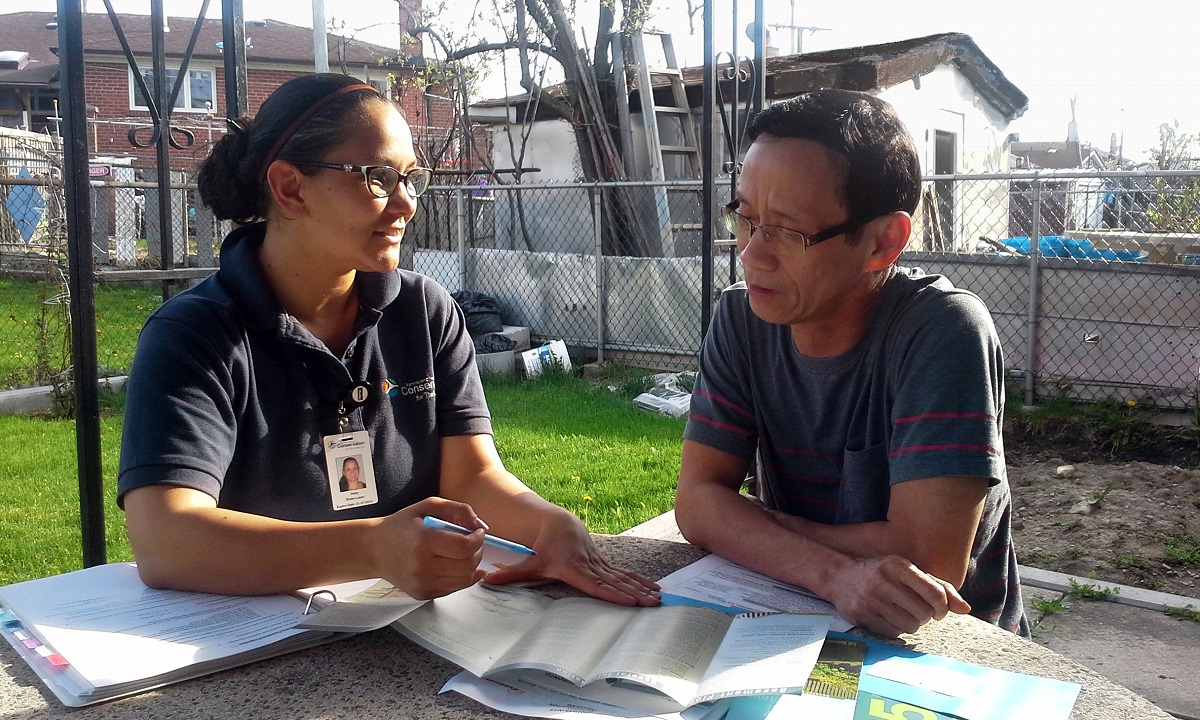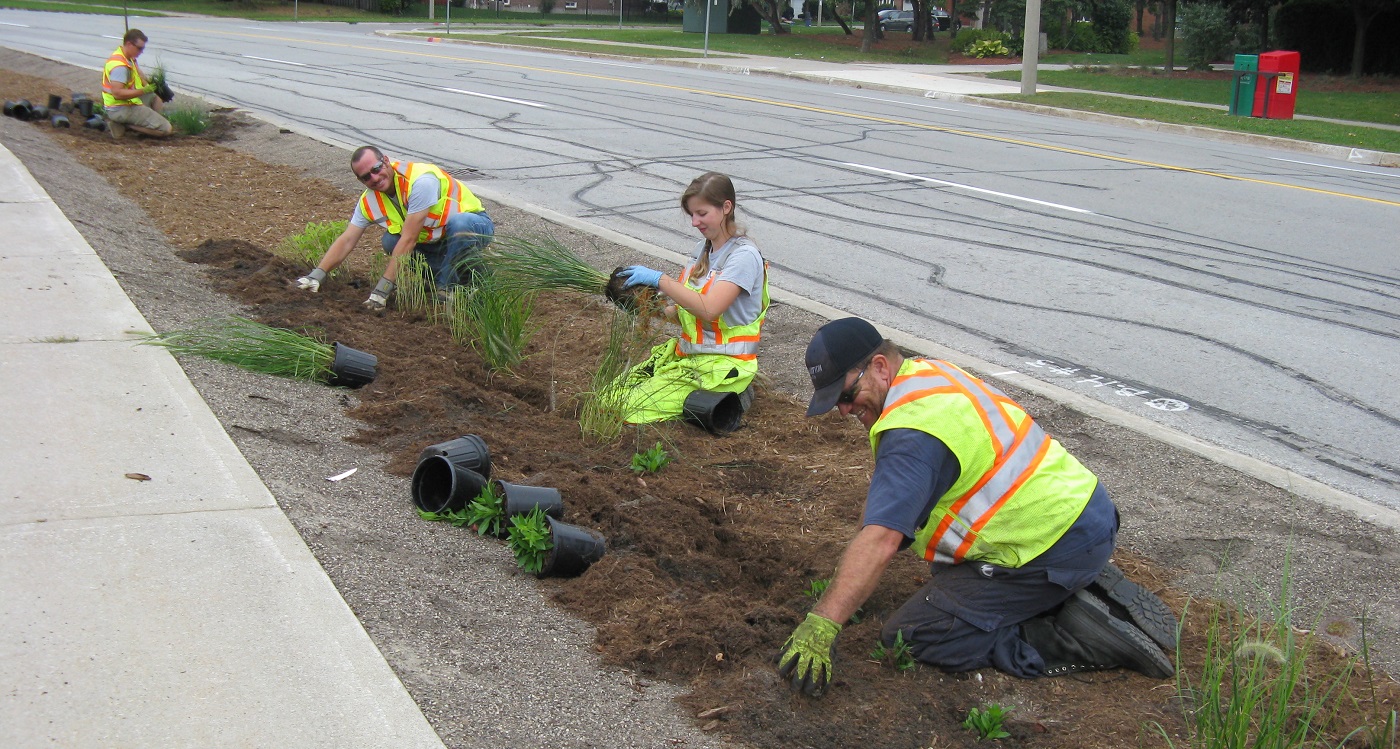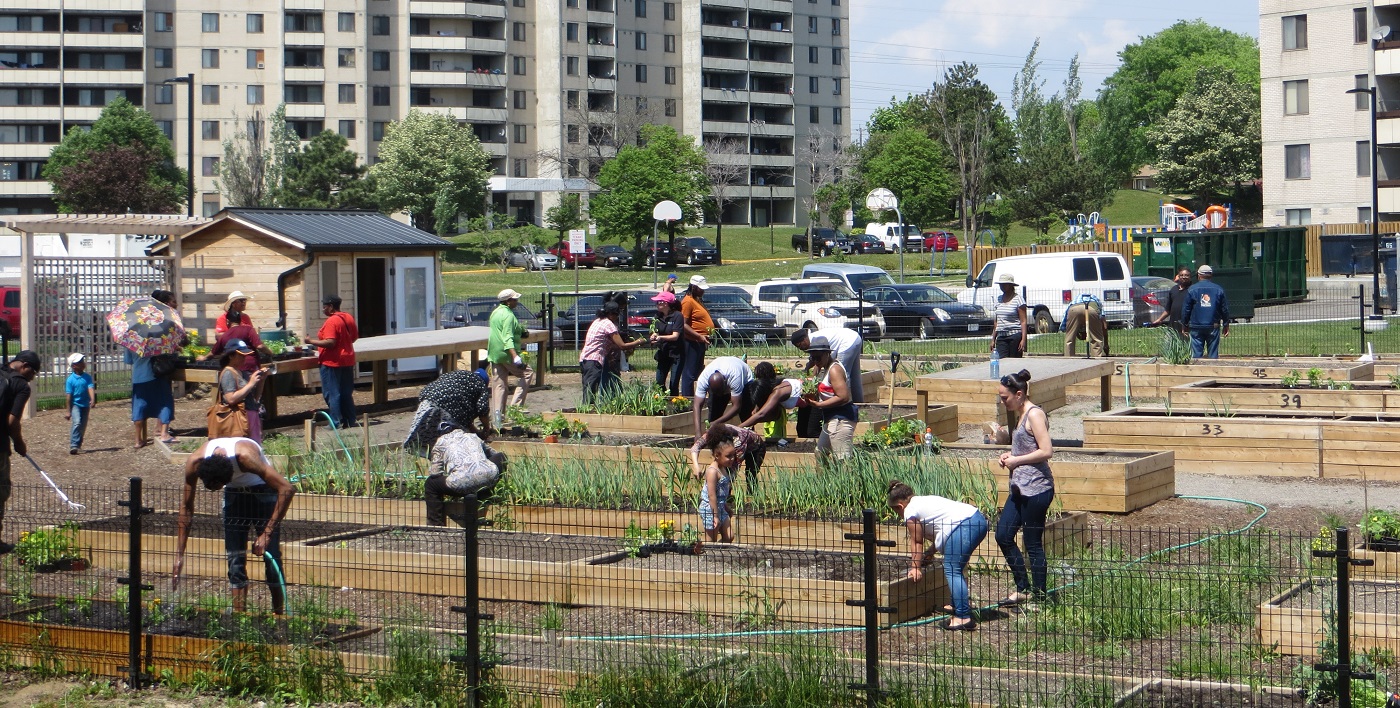The Sustainable Neighbourhood Action Program (SNAP) aims to accelerate the implementation of environmental improvements and urban renewal at the neighbourhood scale.
SNAP takes an integrated approach to overcome urban retrofit challenges and address a broad range of objectives with locally tailored solutions.

Working with local stakeholders, including residents, businesses, local groups and institutions, Toronto and Region Conservation Authority’s (TRCA) SNAP team has identified strategic approaches for advancing resilience at the neighbourhood scale, where implementation ultimately happens:
- Extending the reach of home renovation programs
- Advancing integrated infrastructure projects
- Forging new partnerships for MUR and ICI renewal
- Strengthening community health, wellbeing and resilience
How It Works
We seek to develop action plans to improve the local environment on the neighbourhood scale and build resiliency against climate change by greening local infrastructure and encouraging positive behavior changes among residents.
Each of the individual SNAP programs is unique to its neighbourhood. However, all SNAPs share a common approach.
The SNAP neighbourhood model includes the following features and outcomes:
Neighbourhood scale: Focusing on place-based solutions
SNAPs coordinate private and public actions at a neighbourhood scale, contributing to a holistic systems strategy. They identify creative retrofit solutions based on the unique environmental and socio-economic context and local community interests.
Multi-objective: Seeking co-benefits
SNAPs focus on making sustainable changes across five core theme areas: stormwater management, water use and conservation, energy, and natural heritage. The SNAPs also seek synergies with a number of complementary themes, including health and well-being, transportation, waste management, community identity and culture.

Science-based: Predicting measurable outcomes
SNAPs use a science-based process for identifying and evaluating integrated solutions that have measurable impact, provide a business case for implementation and achieve multiple objectives. Performance monitoring plans measure long-term change and tracking of sustainability targets against local baseline data.
Demonstration: Showcasing innovation
Quick-start local demonstration projects such as naturalized landscaping, rain harvesting and renewable energy production help to bring the plan to life for neighbourhood residents.

Local networks: Engaging a new public
SNAPs emphasize collaboration and building partnerships with stakeholders throughout the process. Local residents, businesses, community groups and institutions are all engaged in the design of the SNAP and in efforts to build local capacity for implementation.
Social market research: Identifying local motivators
Through community-based social marketing research, social innovation approaches and extensive consultation with the local community, SNAPs identifiy and gain understanding of the barriers and motivations to behavioural change, and develop strategies to overcome these barriers.

